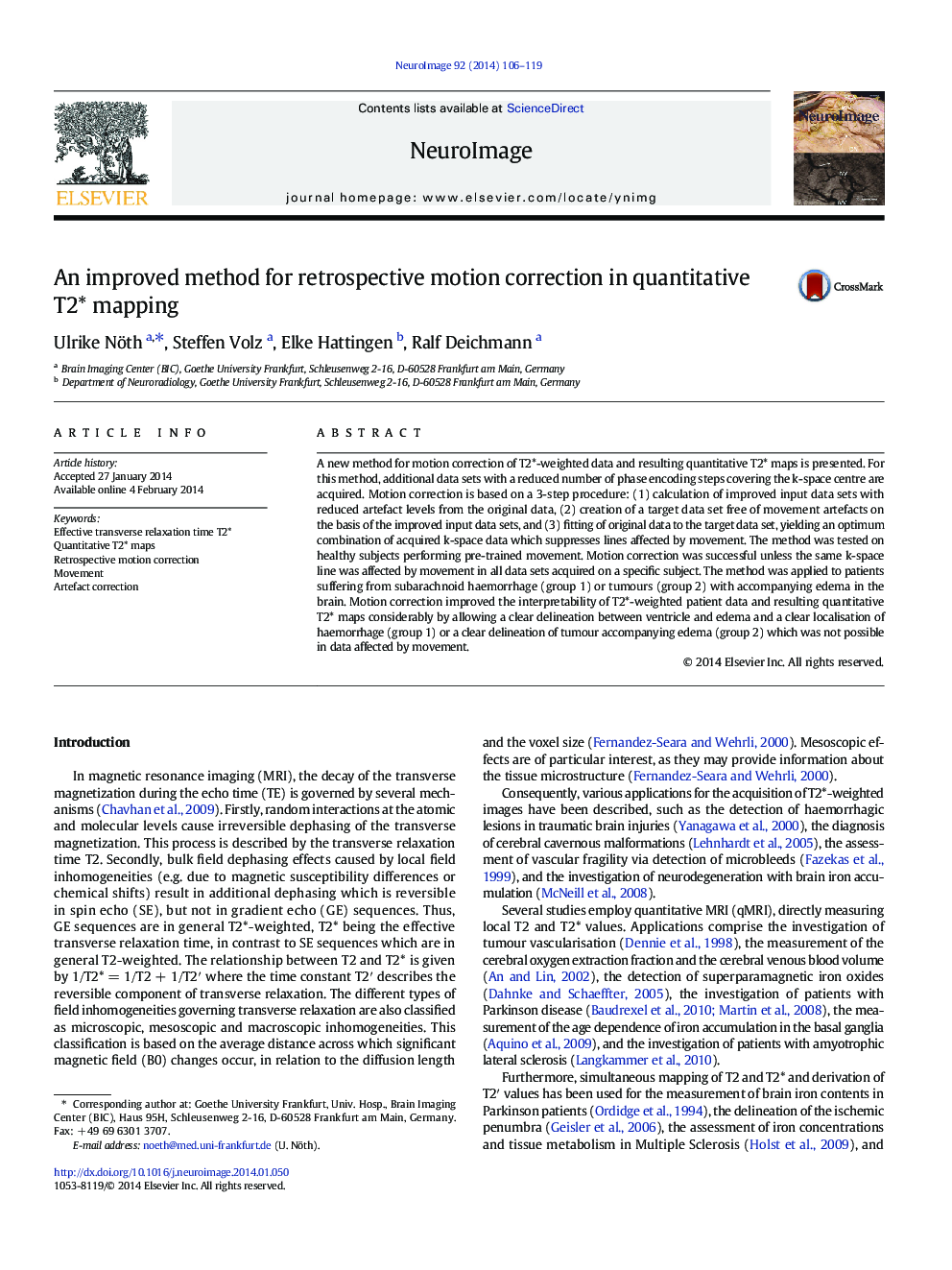| Article ID | Journal | Published Year | Pages | File Type |
|---|---|---|---|---|
| 6027586 | NeuroImage | 2014 | 14 Pages |
Abstract
A new method for motion correction of T2*-weighted data and resulting quantitative T2* maps is presented. For this method, additional data sets with a reduced number of phase encoding steps covering the k-space centre are acquired. Motion correction is based on a 3-step procedure: (1) calculation of improved input data sets with reduced artefact levels from the original data, (2) creation of a target data set free of movement artefacts on the basis of the improved input data sets, and (3) fitting of original data to the target data set, yielding an optimum combination of acquired k-space data which suppresses lines affected by movement. The method was tested on healthy subjects performing pre-trained movement. Motion correction was successful unless the same k-space line was affected by movement in all data sets acquired on a specific subject. The method was applied to patients suffering from subarachnoid haemorrhage (group 1) or tumours (group 2) with accompanying edema in the brain. Motion correction improved the interpretability of T2*-weighted patient data and resulting quantitative T2* maps considerably by allowing a clear delineation between ventricle and edema and a clear localisation of haemorrhage (group 1) or a clear delineation of tumour accompanying edema (group 2) which was not possible in data affected by movement.
Keywords
Related Topics
Life Sciences
Neuroscience
Cognitive Neuroscience
Authors
Ulrike Nöth, Steffen Volz, Elke Hattingen, Ralf Deichmann,
